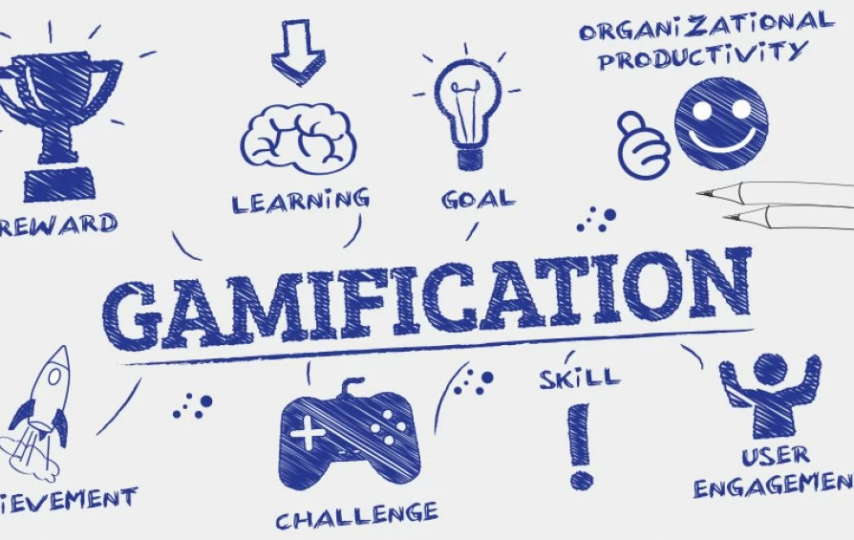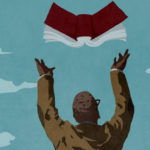Are you looking for a way to enhance your employees’ learning experience and boost their engagement? Look no further than gamification. Gamification is the use of gaming elements in non-game contexts, and it has proven to be an effective tool for upskilling employees. By incorporating gaming elements into your training programs, you can create a more interactive and immersive learning environment that will motivate your employees to actively participate and excel.
Gaming elements such as points and rewards play a crucial role in upskilling. When employees earn points or receive rewards for completing tasks or achieving milestones, it triggers their competitive instincts and drives them to perform better. This not only encourages active participation but also increases motivation and engagement levels among employees. Additionally, leaderboards can be used to foster healthy competition among team members, further enhancing the learning experience. As individuals strive to climb up the leaderboard ranks, they are compelled to put forth their best efforts, resulting in improved performance and skill development. With the power of gamification, you can transform mundane training sessions into exciting opportunities for growth and development for your employees.
Increasing Employee Engagement through Gamification
You’ll be amazed at how gamification can captivate and motivate your employees, taking their engagement to new heights. By incorporating gaming elements into your upskilling programs, you can create a more interactive and immersive learning experience for your employees. Instead of traditional training methods that may feel monotonous or disconnected, gamification introduces a sense of excitement and competition.
Through gamified learning platforms, employees can earn points, badges, or other rewards as they complete different tasks or modules. This not only provides instant gratification but also creates a sense of achievement and progress. As employees see their scores increase or unlock new levels, they become more motivated to continue learning and improving. This increased engagement leads to higher retention rates and better knowledge application in real-world scenarios.
Moreover, gamification encourages social interaction among employees. With leaderboards displaying top performers or collaborative challenges that require teamwork, it fosters healthy competition and camaraderie within the workforce. Employees are more likely to actively participate in discussions, share knowledge with colleagues, and seek out opportunities for collaboration when there is an element of fun involved.
Incorporating gamification into your upskilling initiatives not only makes learning more enjoyable but also boosts employee engagement. By tapping into the innate human desire for achievement and competition, you can create a learning environment that captivates your employees’ attention and motivates them to continuously improve their skills taxonomy.
Enhancing Learning Experience with Gaming Elements
To enhance the learning experience, incorporating gaming elements creates a rhythm and flow that engages employees. By introducing game-like features such as progress tracking, rewards, and challenges, employees are motivated to actively participate in their upskilling journey. The use of progress tracking allows employees to visualize their growth and understand how far they have come in their learning process. This sense of accomplishment boosts their confidence and encourages them to continue pushing themselves further.
In addition to progress tracking, rewards play a crucial role in enhancing the learning experience. By offering badges or virtual currency for completing tasks or reaching milestones, employees feel a sense of achievement and are incentivized to keep progressing. These rewards not only provide extrinsic motivation but also create a fun and competitive environment where employees can compare their achievements with others.
Moreover, incorporating challenges into the learning experience adds an element of excitement and engagement. By presenting employees with interactive quizzes or simulations that require critical thinking and problem-solving skills, they are encouraged to actively apply what they have learned. This hands-on approach not only deepens their understanding but also makes the learning process more enjoyable.
- Sub-list 1: Progress tracking provides a visual representation of growth.
- Sub-list 2: Rewards add a sense of achievement and motivation.
- Sub-list 3: Challenges promote active application of knowledge.
By incorporating gaming elements into the upskilling process, employees are more likely to remain engaged throughout their learning journey. The rhythm and flow created by these elements make the overall experience enjoyable while providing tangible rewards for their efforts. So why not gamify your employee training programs today?
The Power of Points and Rewards in Upskilling
Immerse yourself in a world of achievement and motivation by harnessing the power of points and rewards in your journey towards professional growth. When it comes to upskilling, incorporating gaming elements such as points and rewards can greatly enhance the learning experience. By earning points for completing tasks or reaching milestones, employees are motivated to actively engage in their own development. The sense of accomplishment that comes with earning these points provides a tangible measure of progress and encourages individuals to continue pushing themselves.
Rewards further amplify the effectiveness of gamification in upskilling initiatives. Whether it’s unlocking badges, leveling up, or receiving virtual trophies, rewards provide a powerful incentive for employees to consistently strive for improvement. They tap into our intrinsic desire for recognition and validation, fueling our motivation to excel. Moreover, rewards can be personalized based on individual preferences or interests, making the learning experience even more engaging and enjoyable.
Integrating points and rewards into upskilling programs creates an immersive and motivating environment that drives employee learning. It taps into our natural inclination toward achievement and provides a sense of progress that keeps individuals engaged in their professional growth journey. So why not leverage the power of points and rewards? Start gamifying your upskilling efforts today and watch as your employees thrive in their pursuit of new knowledge and skills.
Utilizing Leaderboards for Healthy Competition
Get ready to ignite some healthy competition and take your professional growth to the next level with the utilization of leaderboards. Leaderboards are a powerful tool in gamification for upskilling as they provide employees with a clear sense of where they stand compared to their peers. By displaying rankings based on performance, leaderboards create a sense of urgency and motivate employees to strive for improvement. Seeing their name at the top of the leaderboard can be incredibly rewarding and boost confidence, while being lower down can spur individuals to work harder and catch up. This healthy competition encourages employees to constantly push themselves, resulting in accelerated learning and skill development.
Leaderboards also foster collaboration within teams by creating a shared goal for everyone to work towards. Rather than viewing each other as competitors, colleagues can support each other’s growth and celebrate collective achievements. The visibility of leaderboards allows employees to see how their efforts contribute to the overall success of the team or organization, fostering a sense of belonging and camaraderie. Additionally, leaderboards can help identify high-performing individuals who can serve as mentors or role models for others. By showcasing their achievements, these individuals inspire others to raise their own performance levels and seek guidance from those who have excelled in specific areas. Overall, utilizing leaderboards in upskilling initiatives not only drives healthy competition but also promotes collaboration and empowers employees to reach new heights in their professional development journey.
Improving Retention of Skills and Knowledge
By fostering a culture of continuous improvement, leaderboards create an environment where you can effortlessly retain and apply your skills and knowledge. When employees see their rankings on a leaderboard, it triggers a sense of healthy competition and motivation to improve. This not only encourages them to consistently engage in upskilling activities but also helps them retain what they have learned. The visibility of leaderboards creates a sense of accountability as employees strive to maintain or improve their position. By actively participating in the learning process and regularly checking their progress, individuals are more likely to remember and apply the concepts they have acquired. Moreover, leaderboards provide instant feedback on performance, allowing employees to identify areas for improvement and take necessary action promptly.
To add depth to this discussion, let’s consider the following table:
| Benefits of Leaderboards for Improving Retention | Examples |
|---|---|
| Increases engagement in upskilling activities | – A sales team competing to achieve the highest number of completed training modules each month. |
| Encourages active participation in learning | – An IT department engaging in coding challenges where participants earn points based on accuracy and speed. |
| Promotes regular practice | – A customer service team striving for high scores by frequently practicing role-playing scenarios. |
| Provides instant feedback | – A marketing team receiving immediate feedback on their campaign pitches during a leaderboard-driven competition. |
| Fosters a sense of accomplishment | – An engineering department celebrating achievements when individual team members reach certain skill milestones. |
These examples demonstrate how leaderboards can be used effectively to enhance retention by creating an engaging learning environment that promotes continuous growth and development.
Conclusion
In conclusion, gamification is a powerful tool that can significantly boost employee learning and upskilling. By incorporating gaming elements such as points and rewards, companies can enhance the learning experience and increase employee engagement. The use of leaderboards also promotes healthy competition among employees, further motivating them to improve their skills.
The power of gamification lies in its ability to make learning fun and interactive. By adding game-like features to training programs, employees are more likely to actively participate and retain the knowledge they acquire. This not only improves their performance but also boosts their confidence and satisfaction in their work.
Moreover, the use of points and rewards provides employees with a sense of accomplishment and recognition for their efforts. This encourages them to continue engaging in upskilling activities, fostering a culture of continuous learning within the organization.
Furthermore, leaderboards create friendly competition among team members, driving them to strive for excellence and constantly improve themselves. This not only benefits individual employees but also contributes to overall organizational growth.
In conclusion, gamification offers a unique approach to upskilling by transforming traditional training methods into engaging experiences that promote active participation and skill retention. With its ability to enhance employee engagement, provide tangible rewards for achievements, and foster healthy competition among colleagues, gamification has proven itself as an effective strategy for boosting employee learning in organizations across various industries.








